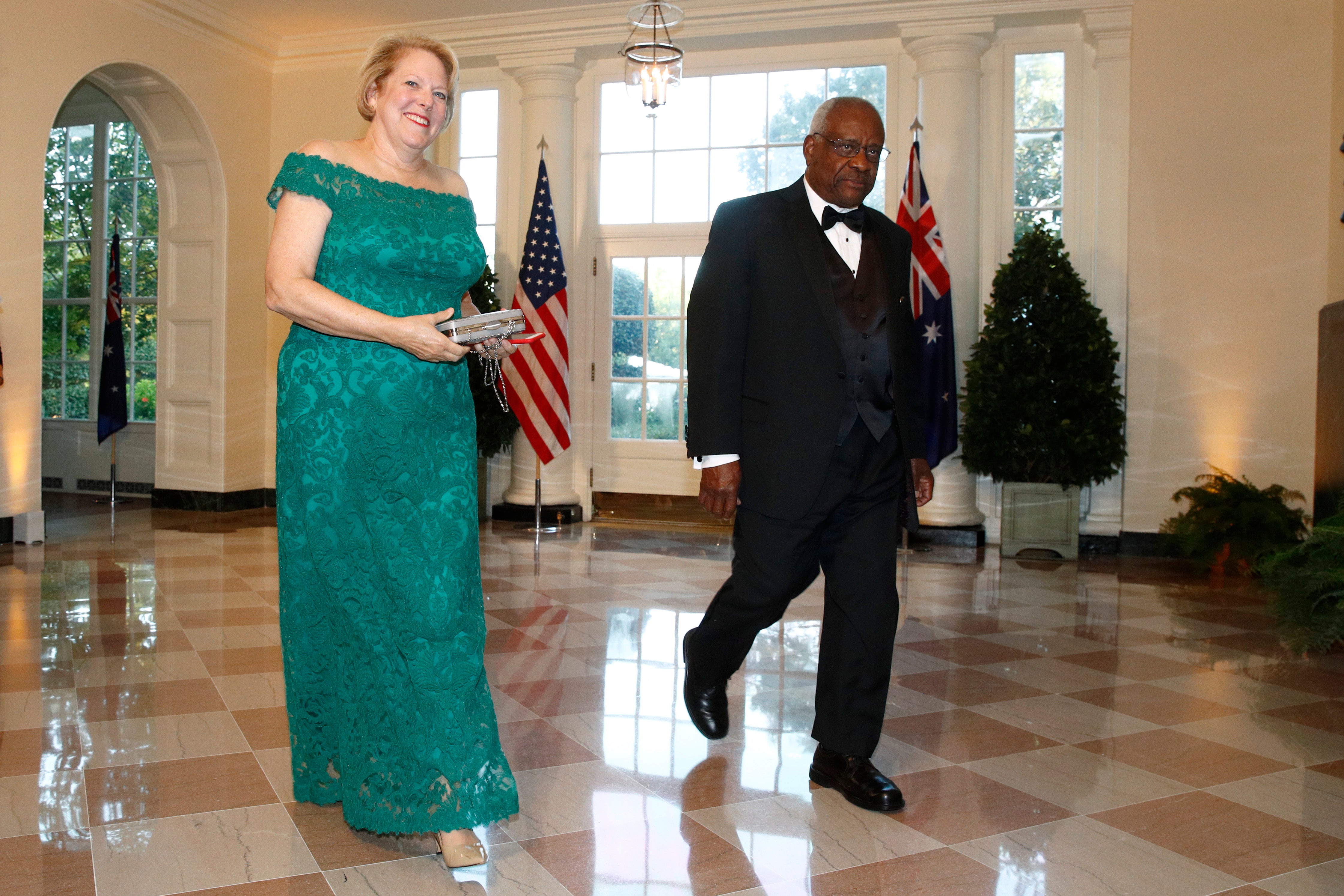Ginni Thomas’ involvement in January 6th shows we have a big problem with the Supreme Court
Critics have now called on Clarence Thomas to recuse himself from future cases involving Trump’s efforts to overthrow the 2020 election — efforts in which we now know his wife was intimately involved — but there’s no process to make him do so


Your support helps us to tell the story
From reproductive rights to climate change to Big Tech, The Independent is on the ground when the story is developing. Whether it's investigating the financials of Elon Musk's pro-Trump PAC or producing our latest documentary, 'The A Word', which shines a light on the American women fighting for reproductive rights, we know how important it is to parse out the facts from the messaging.
At such a critical moment in US history, we need reporters on the ground. Your donation allows us to keep sending journalists to speak to both sides of the story.
The Independent is trusted by Americans across the entire political spectrum. And unlike many other quality news outlets, we choose not to lock Americans out of our reporting and analysis with paywalls. We believe quality journalism should be available to everyone, paid for by those who can afford it.
Your support makes all the difference.New emails provide even more damning evidence that Ginni Thomas may have been involved in efforts to illegally overthrow the 2020 election victory of Joe Biden. Thomas is the wife of Supreme Court Justice Clarence Thomas — and together, the Thomases seem determined to demonstrate just how vulnerable our democracy is.
In March, the Washington Post reported that Ginni Thomas sent White House chief of staff Mark Meadows a series of urgent text messages in late 2020, demanding that he contest the legal election results. She told him that Trump should not concede.
Then in May, the Washington Post also reported that Ginni Thomas had pressured Arizona lawmakers to throw out Joe Biden’s popular vote victory and instead choose “a clean slate of electors.” The implication was that these electors would vote for Trump.
Finally, this week, the Post learned that Thomas was in close contact with lawyer John Eastman. Eastman was heavily involved in efforts to pressure Vice President Mike Pence to refuse to certify the election. The January 6 coup attempt may have been undertaken in part to prevent Pence from certifying the voting results.
Thomas’ texts to Meadows were only made public because they were part of a cache of documents released to the January 6 Committee. The Supreme Court ruled that the Committee could see the documents in an 8-to-1 decision. The one dissenting vote was Clarence Thomas.
Thus, a Supreme Court justice cast a vote to withhold evidence that his wife was potentially implicated in election-tampering.
This seems like an obvious conflict of interest. The highest judges in the land should not be able to use their position to protect their spouses. And numerous critics have now called on Thomas to recuse himself from future cases involving the Trump administration’s efforts to overthrow the 2020 election — efforts in which, we now know, Ginni Thomas was intimately involved.
The case for recusal is obvious. But there’s no mechanism to force Clarence Thomas, or any Supreme Court Justice, to recuse themselves if they don’t want to.
Congress has passed statutes which require lower-court justices to recuse themselves when there is a conflict of interest. But the need for recusal is typically adjudicated by a higher court. The Supreme Court is the highest court; if Clarence Thomas decides not to recuse himself, there is no higher judge to declare his ruling invalid.
People on social media have also called for Chief Justice John Roberts to reprimand Thomas. But it’s not clear on what basis he would do so. There is currently no Code of Conduct for the Supreme Court. Nor is there a mechanism to enforce such a code if it existed.
Supreme Court justices are supposed to be committed to the rule of law, and to want to avoid even the appearance of impropriety. If, like Clarence Thomas they simply don’t care how bad they look, there’s not much that can be done.
There are some controls, at least notionally. Supreme Court justices can be impeached if they are involved in flagrant ethical breaches. If Thomas did intend to cover up his wife’s election-tampering, Democrats should hold him accountable in the House. But even if impeachment succeeds, removal requires a supermajority in the Senate. Given Republicans’ rabid commitment to retaining control of the court, it’s just about inconceivable that GOP Senators would vote to take Thomas off the bench if a Democratic president would pick his successor.
The difficulty of removing a judge, or even in disciplining a judge, is meant in theory to help preserve democratic institutions. Ideally judges are nonpartisan, dispassionate dispensers of dry legal interpretation. The Constitution shields them from removal and even to some degree from oversight by other branches of government because they intended to be above the political fray. Justices need to be protected from the base instincts of the rabble.
But what if the rabble with base instincts is the justice’s wife, or even the justice himself? The fact of the matter is that justices like Clarence Thomas and his conservative allies on the court behave less like dispassionate judges and more like highly partisan legislators.
The conservative majority has taken to using the shadow docket to avoid even having to explain their reasons for controversial decisions. And the leaked decision arguing for the repeal of Roe v. Wade is breathtaking in its contempt for precedent, not to mention for human rights.
The Supreme Court functions now less as a court and more as a third legislative house, which can overrule the others and the executive branch at will. Given that, Clarence Thomas’ impunity isn’t good for the law or for the country. It’s simply another reminder that a Senate undemocratically tilted to the right has installed a radical reactionary supermajority on the Court to rule over us with neither accountability nor conscience.
Ginni and Clarence Thomas each seem to be part of a Republican machine determined to impose authoritarian, minoritarian rule on the United States. In that context, Thomas’ decision in relation to the documents suggest a core contempt for democracy, and a belief that powerful, wealthy conservatives should be allowed to impose their will on the public with impunity.